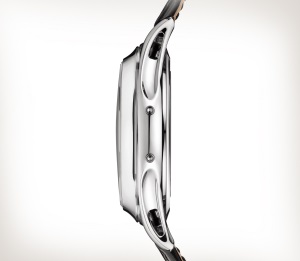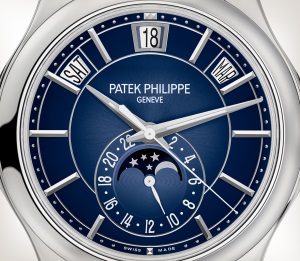Introduction
5205G
-
Complications
Self-winding
Recognizable by its three apertures along an arc for displaying the day, the date and the month, the Reference 5205 Annual Calendar pairs its white-gold version with an elegant sunburst dial in two tones of blue shading to black. The case construction is notable for the slightly concave bezel and the delicately pierced strap lugs. A sleek, dynamic and very contemporary style graces this calendar watch requiring adjustment only once a year.
























